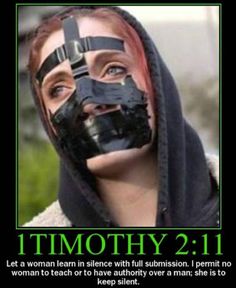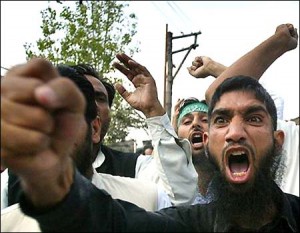 One of the classic examples of preaching that has come down to us, is the terrifying 1741 sermon of Jonathan Edwards in America. He spoke in a sermon entitled ‘Sinners in the Hands of an Angry God’. ‘The wrath of God burns against them, their damnation does not slumber. The pit is prepared, the fire is made ready, the furnace is now hot, ready to receive them.’ Since Edwards’ time, many preachers have used similar techniques of rhetoric to quite literally terrify their congregants into a state of compliance and passivity.
One of the classic examples of preaching that has come down to us, is the terrifying 1741 sermon of Jonathan Edwards in America. He spoke in a sermon entitled ‘Sinners in the Hands of an Angry God’. ‘The wrath of God burns against them, their damnation does not slumber. The pit is prepared, the fire is made ready, the furnace is now hot, ready to receive them.’ Since Edwards’ time, many preachers have used similar techniques of rhetoric to quite literally terrify their congregants into a state of compliance and passivity.
The use of fear as a means of control within the church is a well-known tactic. Alongside terrifying the individual by the threat of eternal punishment, is also a teaching that sees the hand of God at work in natural disasters. To use an example from the States again, the airwaves and the internet were full of Christian Right pundits believing that they could discern God’s hand at work in Hurricane Katrina which devastated New Orleans in 2006. An anti-abortion activist, Steve Lefermine, declared: ‘In my belief, God judged New Orleans for the sin of shedding innocent blood through abortion.’ Pat Robertson famously saw the hand of God in the events of 9/11 as a punishment for homosexuality, abortion and feminism. Extremist Muslims also claimed to be able to see God at work killing Americans through Hurricane Katrina. ‘The Terrorist Katrina is One of the Soldiers of Allah’ declared Kuwaiti official, one Muhammad Mlaifi. Yet another Christian commentator, Michael Marcavage, declared that God had decided to wipe out New Orleans because of homosexuality.
I have no doubt that I could extract from other sources numerous other examples of preaching that declares God to be in total control of the unexpected disasters which are sent to respond to the sins of humankind, especially the ones that the preacher particularly disapproves of. There are various reactions to such statements that can be made. One is to see an absurdity in these claims and find them almost funny. They are, however, removed far from humour by the fact that some individuals who hear these interpretations presumably believe them to be true. That makes all such statements sinister and conducive to an alarming frightening understanding of the nature of God. Such a theology of fear needs to be confronted and named for what it is, a doctrine whose purpose is designed to threaten terror and keep control over others.
When a preacher uses terror tactics in his messages, two particular things are happening. His target is likely to be people not actually present in the building, people who are identified as enemies of faith, apostates, sinners and those who do not conform to the preacher’s ideals. So, in the first place, terror sermons are about shoring up boundaries with the outside world, helping those inside to feel safe and warning them from straying from the narrow path set by the church. In short the preacher wants to re-emphasise the boundary between us and them. In the second place the preacher is also creating a miasma of fear among his own people. Not only are they forbidden to look too much at the world outside, for fear of having their purity compromised, but they are also exhorted to cling tightly to the leadership of their pastor. He is the one who can protect them from the threat of disasters in this life and the possibility of everlasting damnation in the one to come. The God, who has designed everlasting torments for the wicked, is also behind the arbitrary events of history. His spokesman and representative in the church is the preacher and leader. His task is to declare the Word and Will of God to those in his charge. But as we can see, an important tool in maintaining his control and power is sometimes this weapon of fear.
Many people in the UK may well have never experienced the tools of fear-mongering used in their churches. It is true that all my examples comes from the States where the control of congregations through the weapon of fear is perhaps a more common feature of church life. But I would suggest that fear is used in churches quite frequently, even it is less obvious in this country. A place where there is constant reference to a God who punishes individuals horribly or who sends disasters to repay back-sliders is a setting which will always frighten people. The use of fear tactics, implied or actually uttered, will always be threat to people’s peace of mind and day to day equilibrium.
In speaking about ‘selling fear’ I am referring once again to a style of church life that, at best, is uncomfortable and, at worst, cruel and abusive. Even though in this country when it occurs, it normally remains at the uncomfortable end of the spectrum, I would challenge everyone to become sensitive to what I called the ‘miasma of fear’ that clouds the life of many churches in every part of the world. Most of the responsibility for lifting this cloud rests on the leaders. They should be challenged every time they use, directly or indirectly, fear tactics in their conduct of church life. One of the key biblical passages which can guide in this is the one that says. ‘There is no room for fear in love. Perfect love casts out fear’. To sow fear in any form within a congregation is a direct denial of the commandment to love. Is there any greater way that a church leader could fail in his or her responsibility to love and care for the sheep?






